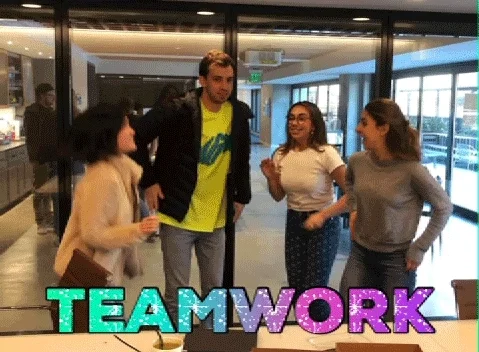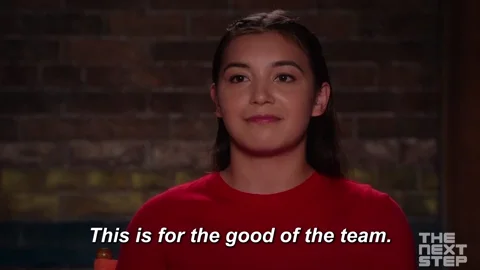
Teamwork makes the dream work!
But do you struggle to get all your team members on the same page?
While it can be hard to make decisions as a group, it's much more effective (and fun!) to work with a team than by yourself. With these 5 easy-to-follow steps, you can move your collaborative decision-making skills to the next level!
Step 1: Set the Right Conditions
Involve the Right People
When your team feels stuck, it's time for a (virtual) meeting. When setting up the meeting, make sure you invite the right people. That means: Bring a diverse group of people, with different backgrounds and opinions.
Research shows that diverse groups are better at making decisions because they can share new information and different perspectives.

If your team members are all very similar in their role, seniority, and mindset, invite someone from a different team. That could be someone more junior or senior, or someone who works in a different field.
Appoint a Facilitator
You don't want a meeting where everyone is talking over each other.
If possible, invite someone who can moderate the meeting, keep time, and guide the group to reach a decision. This person should have a good understanding of the issue at hand, but remain neutral in their opinions.

Step 2: Define the Problem
Provide Context
Start your discussion with a quick overview of the task at hand, and describe what kind of decision your team needs to make to move forward.

Let's say you work for a food manufacturer. The task at hand is to produce a new type of candy, and your team has to find out what flavors customers are interested in.
The issue is that you can't decide on the best way to do customer research. Without customer research, your company potentially loses a lot of money on a product nobody wants.
 Your quick intro should cover these 3 questions:
Your quick intro should cover these 3 questions:
What's the task, i.e., what do we want to accomplish?
What decision do we need to make?
Why does this decision matter?
Avoid Narrow Framing
If you kick off your discussion with a narrow question such as “Are surveys the best way to do customer research?” there's a risk you'll only talk about the pro and cons of one solution — surveys — without considering other options.

Instead, center your problem around an open-ended question like “How can we better understand what flavors our customers like?”
Step 3: Brainstorm Solutions
Be Creative
Using the information shared while defining the problem, you and the team can now brainstorm for potential solutions.

Be creative and collect as many ideas as possible. At this stage, there are no "stupid" ideas.
 Consider these questions:
Consider these questions:
What are possible solutions we haven't discussed before?
If we were the customers, which approach would we prefer?
What would we do if time and money didn't matter?
Encourage Critical Thinking
To stop brainstorming from becoming groupthink, encourage your team members to be open, honest, and ask clarifying questions.
Team leaders should model this behavior by asking probing questions of everyone, like “Tell me why you think that?” and “What brought you to this idea?”

Step 4: Weigh the Pros and Cons of Each Solution
Pre-select Ideas
Once you've brainstormed a list of potential solutions, you can start evaluating them for the best alternatives based on the criteria you established earlier in the discussion.

If your problem is to come up with the best way to find out new candy flavors customers might want, the criteria could be that the solution needs to be cost-effective and doable within a specific timeframe.
 Questions to consider during this part of the discussion are:
Questions to consider during this part of the discussion are:
What are the pros/cons for each option?
Which solution is the most realistic to accomplish for now?
For which solution do we have the resources and expertise?
Dotmocracy
Ideally, everyone would agree on the same solution as the best option, but it's very unlikely to happen. In this case, you'll need to use a different decision-making method.

Try a technique called "dotmocracy."
The way it works: the facilitator gives each participant an equal number of stickers or markers. Each pre-selected solution is written in large text on a sticky note, and placed on a wall or flip chart.
Everyone is then invited to “vote” for their favorite option by placing their stickers on the notes. The option with the most dots wins.
Step 5: Implement the Solution
Plan Next Steps
Lastly, create a plan of action to implement the solution. List the steps your team must follow, and identify who should do what.

Make sure that people are committed to the tasks they take on. It's smart to consider a backup plan.
 Questions you should ask:
Questions you should ask:
What are the individual steps, and in which order do we do them?
Who is responsible for which tasks?
If our first solution doesn’t work out, what is our best alternative?
When should each step be completed?
Setting Realistic Deadlines
Don't underestimate the importance of the last question! Often, it’s not your team’s decision that leads to failure, but the problems that arise when your team realizes that it was too optimistic when setting timelines.
Make sure you’re setting realistic goals to avoid this scenario. Base your timelines on those of similar projects that went well.

Quiz: The Candy Problem
Let's go back to the team with the "candy problem".

They decided on the best way to test new flavors with customers, and successfully finished their research. The core team gets back together to discuss and decide how they'll present their findings to the leadership team.
Guess what? They're haggling over details again, talking over each other and getting nowhere.
 What do you think is the main reason for their meeting going wrong? Which advice would you give?
What do you think is the main reason for their meeting going wrong? Which advice would you give?
A) It's their attitude. They should run a structured brainstorming session with clear rules such as "Let people finish," "There are no bad ideas," and "Respect each other."
B) If it's just the core team meeting, they should definitely consider inviting a neutral person who can act as a facilitator.
C) They didn't frame the problem properly. They should go back and ask themselves, "What are we trying to accomplish?"
D) They just don't have good collective decision-making skills. They should give up.
Quiz
Which advice would you give the candy research team?
Take Action

Do you feel ready to tackle the next meeting with your team? Here are some extra ideas and resources for to help improve your decision-making skills as a team:
Your feedback matters to us.
This Byte helped me better understand the topic.
